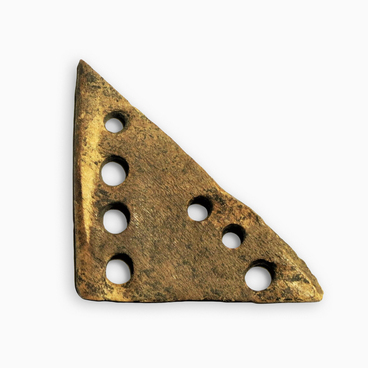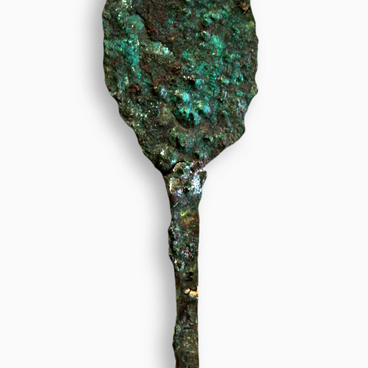An anvil is one of the main tools and devices of a blacksmith (along with a hammer) for cold and hot metalworking by methods of plastic deformation. It is a massive, immovably fixed metal support on which metal workpieces are forged. An anvil is a stationary tool used for free manual forging.
The main elements of the design of anvils of various types are a horn, a face (work surface) with holes, and a base with “feet.”
Anvils were forged from iron, after which they were tempered. From the middle of the 19th century, different parts of the anvil began to be joined by welding, which increased the overall strength of the product.
The horn is used for forging any round parts/products. There are round and square holes in the body of the anvil. The anvil also has four protrusions at the bottom, which are called “legs” or “feet.”
An anvil was placed on a wide block dug into the ground and attached to it with iron crutches. According to written sources, the anvil was installed to the right of the forge at such a distance that the blacksmith could freely pass between it and the forge. When the blacksmith was facing the forge, the height of the anvil installation should have been such that the top of the anvil was about ¼ arshins (18 centimeters) below the blacksmith’s elbow.
Anvils with a flat base, such as the one presented in the museum’s collection, have spread in blacksmithing since the 17th century; in previous eras they were wedge-shaped and driven directly into a wooden block. The anvil in this configuration became widespread across the world at the beginning of the 19th century.
Damage on the anvil face indicates its long-term
use. The manufacturer’s brand is visible on one of the sides. Such items in the
19th — early 20th century were cast, as a rule, in Ural factories, after which
they were sold at fairs both in Central Russia and in Siberia. The object was
transferred to the Omsk Museum-reserve “Starina Sibirskaya” (“Antiquity
Siberian”) in 1968.

